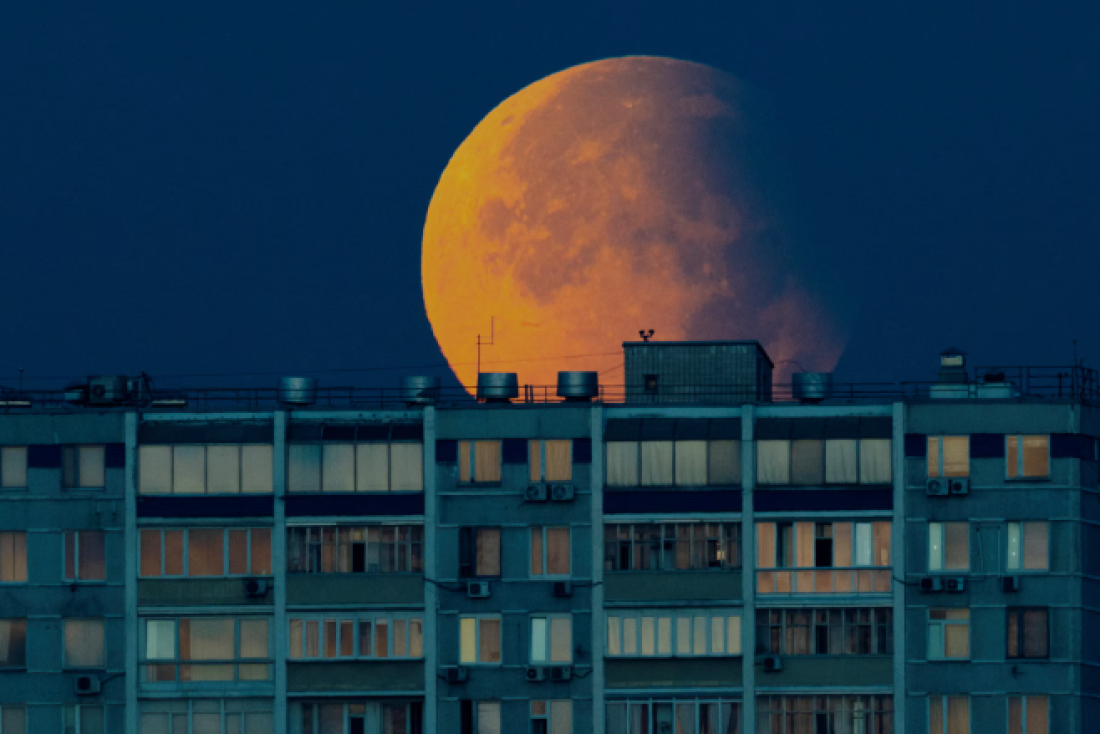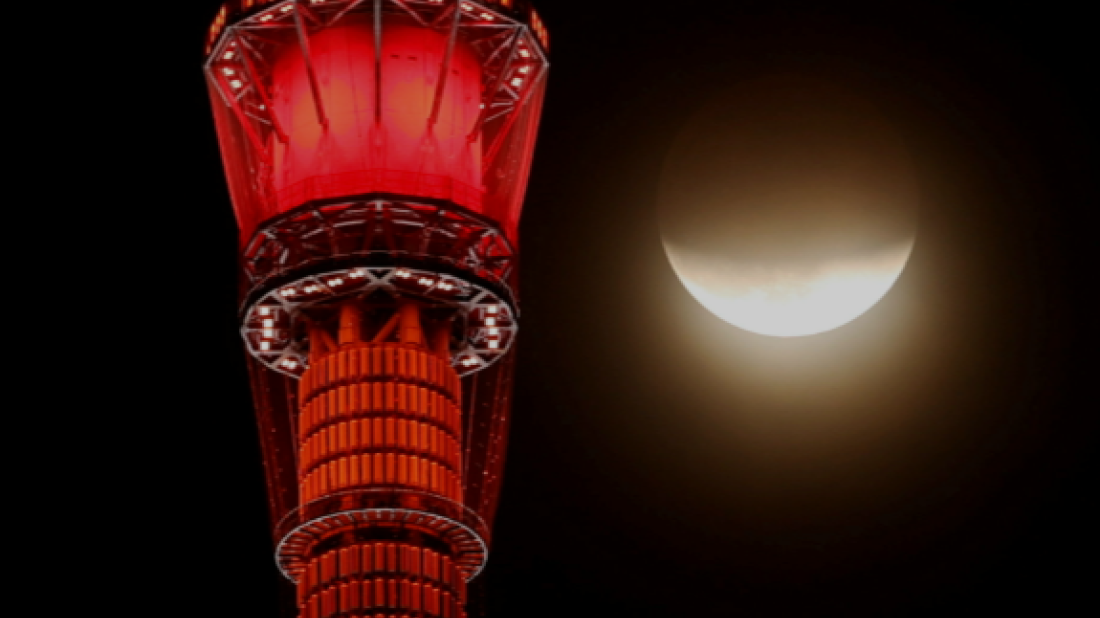OSCE Chair welcomes Azerbaijan-Armenia peace process, hails closure of Minsk Group
OSCE Chairperson-in-Office, Minister of Foreign Affairs of Finland, Elina Valtonen told the press that "the end of the conflict between Azerbaijan and...
Today's "Blood Moon" total lunar eclipse captivated viewers worldwide, with stunning photos capturing the moon's striking red hue as it passed through Earth's shadow.
On March 13-14, 2025, a captivating total lunar eclipse took place, marking the first of its kind since 2022. The event was visible across North and South America, offering some of the best views until 2029, with observers in the eastern half of the continent catching a glimpse mostly after midnight, while those in the western regions enjoyed a more convenient view in the evening hours.
As the moon passed through Earth's shadow, it gradually dimmed before transforming into a striking copper-red orb in the night sky. The eclipse unfolded as the moon glided through the northern half of Earth's umbra, the central shadow cast by our planet. This unique positioning caused the southern edge of the moon to darken more significantly, while its northern limb displayed lighter shades of pinkish-orange. The moon's eerie red hue during totality was caused by sunlight refracting through Earth’s atmosphere, scattering shorter blue and green wavelengths, and allowing longer red and orange wavelengths to illuminate the lunar surface—a phenomenon often referred to as a “blood moon.”
The Columbus Connection
What made this lunar eclipse even more remarkable was its alignment with a historic event. This eclipse closely mirrored a celestial scene witnessed on February 29-March 1, 1504, when Christopher Columbus used a blood moon to frighten indigenous Arawak people into cooperating with his crew. On that night, the "Columbus Eclipse" helped Columbus secure his survival during his fourth voyage to the Americas. The March 13-14, 2025, eclipse occurred exactly one hypersaros—a 521-year cycle in which lunar eclipses share similar characteristics—after the event in 1504. The moon during this eclipse was positioned near the same stars that formed the Spring Triangle, a celestial equilateral triangle made up of red supergiant stars Arcturus, Spica, and Denebola. The latter star appeared just above the moon, further amplifying the stunning visual effect.
Looking Ahead to Future Eclipses
While the 2025 eclipse was a spectacular show for viewers in the Americas, another total lunar eclipse is on the horizon. On September 7-8, 2025, the "Corn Moon" will turn red for 82 minutes, becoming the second blood moon of the year. This one will be best visible from Asia, while Europe will witness it at moonrise. For North Americans, the next total lunar eclipse won’t be until March 3-4, 2026, with the best views from Hawaii, Alaska, and the western U.S. and Canada. This eclipse will feature a shorter totality, lasting 58 minutes.





A total lunar eclipse occurs when Earth lies directly between the sun and a full moon, casting its shadow onto the lunar surface. During totality, only the sunlight that passes through Earth's atmosphere reaches the moon. This light is refracted and scattered, with the blue and green wavelengths getting filtered out, leaving behind the reddish glow that bathes the moon. NASA describes this moment as thousands of sunsets being projected onto the moon, a breathtaking phenomenon that captivates stargazers around the world.
Whether viewed as a celestial spectacle or a historical marker, this total lunar eclipse left a lasting impression, reminding us of the beauty and wonder of our night sky.
For nearly three decades following the dissolution of the Soviet Union, the international system was defined by a singular, overwhelming reality: American unipolarity.
Chinese scientists have unveiled a new gene-editing therapy that they say could lead to a functional cure for HIV, making it one of the most promising developments in decades of global research.
As the year comes to an end, a new initiative bringing civil society actors and regional analysts from Armenia and Azerbaijan together is steadily gaining ground.
Faced with mounting public outrage following one of the deadliest environmental disasters in the nation’s recent history, the Indonesian government has pledged to investigate and potentially shut down mining operations found to have contributed to the catastrophic flooding on Sumatra.
Uzbekistan has reopened its border with Afghanistan for the first time since 2021, the country’s Chamber of Commerce and Industry announced on Tuesday.
Britain has imposed new sanctions on Russia, targeting the entire GRU military intelligence agency, which was highlighted in a UK public inquiry into the 2018 poisoning of Dawn Sturgess, caused by the nerve agent Novichok.
Afghanistan’s foreign minister, Amir Khan Muttaqi, has said distanced the Afghan government from recent incidents involving Afghan nationals on U.S. soil.
Russia has warned that any "illegal action" by the European Union regarding its frozen assets will provoke "the harshest reaction," with Moscow already preparing its response.
Families of 153 Chinese passengers aboard the missing MH370 flight are once again hopeful as a fresh search for the plane is announced.
Residents of Darfur are being systematically held for ransom by the Sudanese paramilitary force that overran a city in the western part of the country in late October.
You can download the AnewZ application from Play Store and the App Store.

What is your opinion on this topic?
Leave the first comment